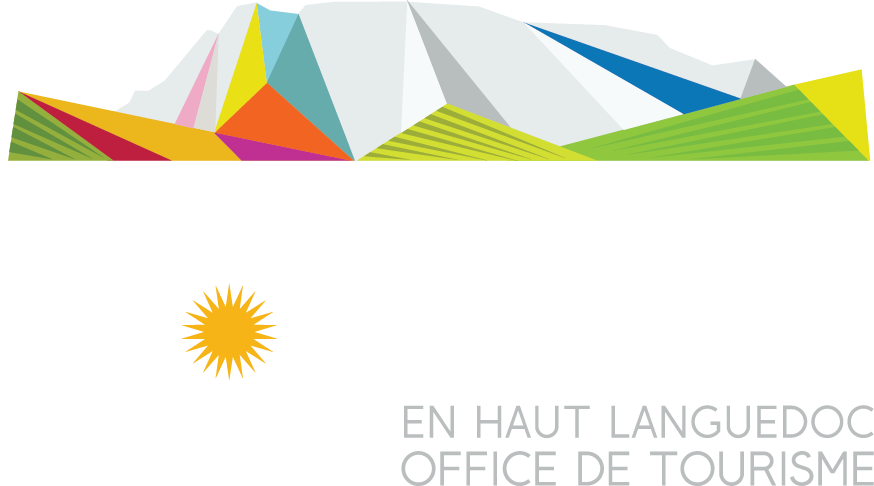The Minervois au Caroux landscapes
![]()
LE CANAL DU MIDI
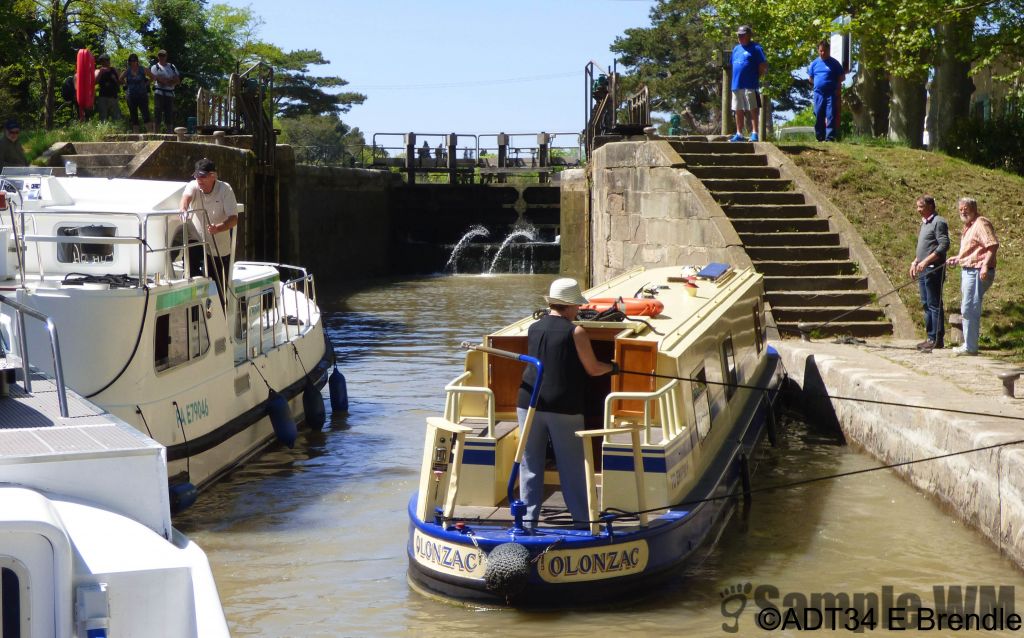
The Canal du Midi, which winds its way through the Minervois wine-growing plains, a UNESCO World Heritage Site since 1997, invites you to walk or cycle along its banks. The Canal du Midi, the work of Paul Riquet, inaugurated in 1681, has over the years seen the passage of numerous barges carrying cereals, wine and even fabrics. No less than 12,000 men and women worked on this project, which includes 328 structures (bridges, locks, etc.), including the Ognon lock at Olonzac.
Today, the Canal du Midi is an essential place for river tourism.
VINEYARDS OF THE MINERVOIS
The Minervois vineyard extends in successive terraces from the foothills of the Montagne Noire (Black Mountain) to the Canal du Midi.
On exceptional terroirs, the Hérault's Minervois is made up of three main types of landscape differing in soil and climate, which allows the different grape varieties are gorged with wind and sun to offer wines of great richness and diversity, ready to be tasted (in moderation, obviously).
THE "PETIT CAUSSE" TERROIR
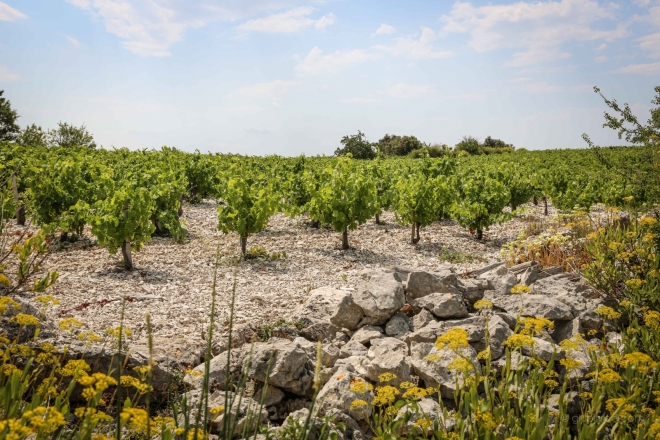
The « petit causse » begins in Félines-Minervois and extends to Azillanet, encompassing La Livinière, Siran and Cesseras. It stretches from the plains and terraces to the foothills of the Montagne Noire, heralding mountainous landscapes to the North. The vine, the dominant vegetal element, cohabits with a low scrubland and numerous pine forests. On the summits of the hillsides, the grape varieties of the vine take the place of the garrigue. The variety of soils (hard and soft limestone, schist, sandstone, quaternary terraces) offers a diversity of wines and allows the adaptation of many grape varieties, including Syrah, which requires a relatively large and regular supply of water. This sector is proud of its "Village" wine appellation, the first in the Languedoc (Minervois, La Livinière) recognised in 1999, thanks to the perseverance and tenacity of its winegrowers.
THE CAUSSE TERROIR
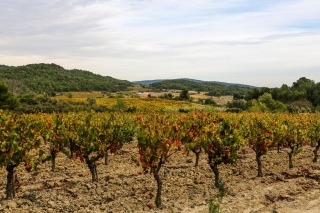
The Causse covers the villages of Minerve, La Caunette and Aigues-Vives and as far as Saint-Jean-de-Minervois. Here the vines are not only found alongside the southern garrigue but also the very white limestone rock of the Cesse and Brian gorges, and the plots are smaller due to the more rugged relief. The morphology of the plots may depend on the nature of the soil. Very calcareous and poor, they do not prevent the vine from implanting itself there, the roots can as deep as they need in order to draw their water reserves (almost ten meters) by following the cracks in the soil. However, the elders always favoured lands that were easier to work, such as the valleys bottoms, where the earth was able to accumulate. We can observe the presence of vernacular agricultural buildings ("mazets", "capitelles", dry stone walls....), which are strong visual elements of the Mediterranean landscape.
Grenache and Carignan, Mediterranean grape varieties, appreciate the heat and dryness of these causses.
THE MOURELS TERROIR
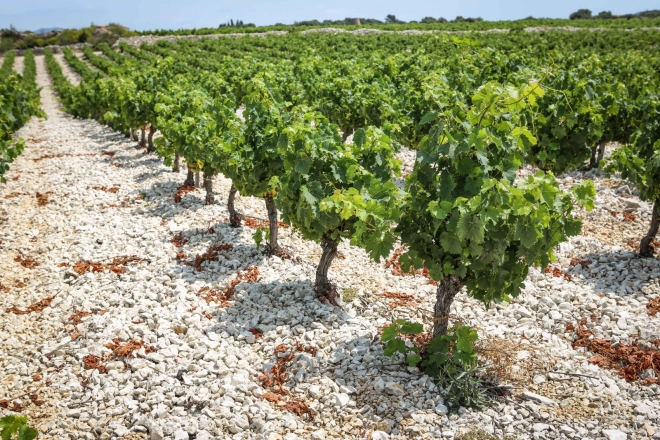
The Mourels stretch from Azillanet to Agel via Beaufort, Oupia and Aigne. They are rocky ridges formed by raised geological layers and crowned by a sandstone bench. We find the alternation between spontaneous vegetation and vines with the same contrasting effects according to the seasons. Here again the implantation of the vine is induced by the nature of the soils. Sandstone, unlike limestone, is very difficult to pierce through the roots, so there are no vines at the top of Mourels.
Under the AOC Minervois wine appellation, the 3 main terroirs are Mourels, Causse and Petit-Causse. There, the rich soils helped by the sun and the wind produce fruity wines with varied aromas.
In the vineyards of Félines, Centeilles, Cantaussel or La Livinière, you may meet some small dry stone shelterswhich once protected shepherds and winegrowers from the cold and heat.
THE CAUSSES OF THE MINERVOIS
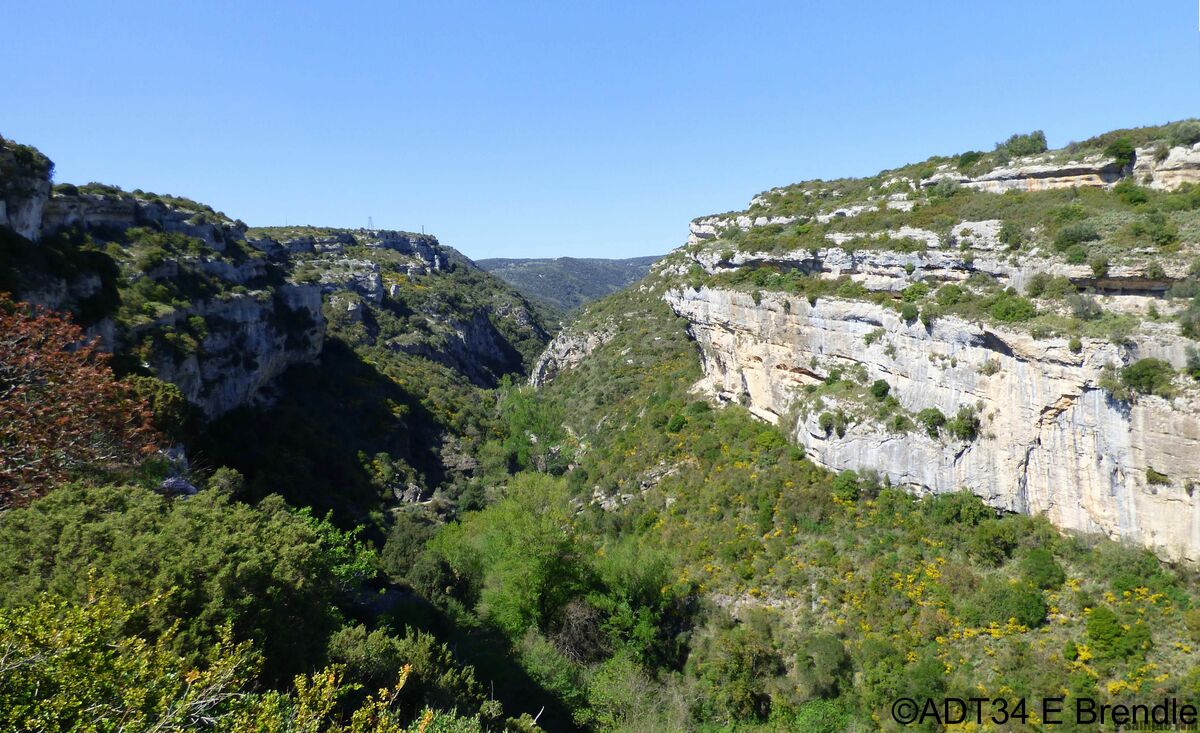
Vast plateaux of clear limestone composed of nummulites and tiny molluscs left here 50 million years ago by the sea, the causses surround the village of Minerve. Erosion has shaped the rock, leaving everywhere ruiniform landscapes, avens, caves, two natural bridges and pebbles.
The area is covered with garrigue, with characteristic plant species such as holm oak, strawberry tree, juniper, olive tree, box tree, rosemary, broom, asphodel, honeysuckle, thyme...
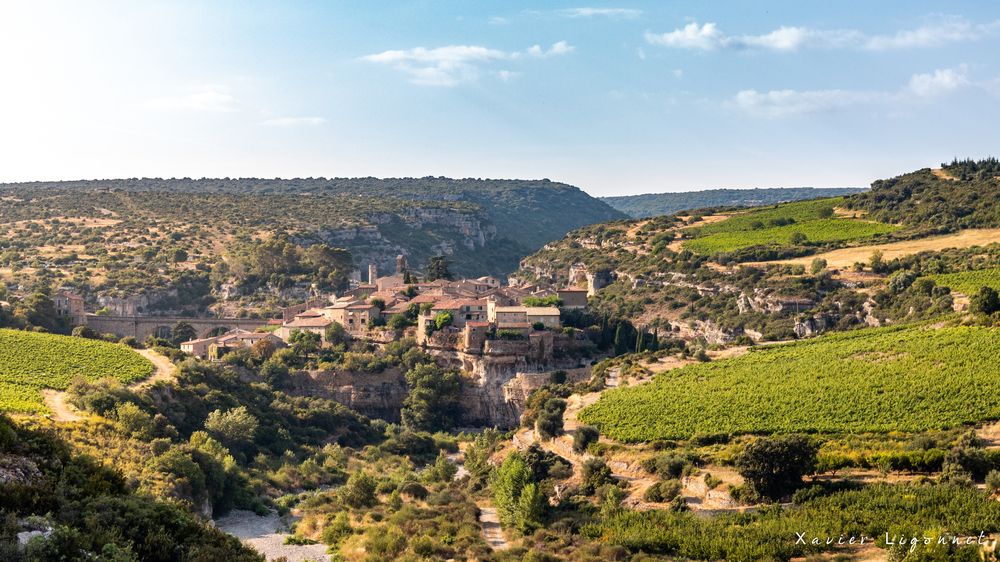
The Cathar city of Minerve, located in the heart of the Haut Languedoc Regional Natural Park, is classified as one of the Most Beautiful Villages in France. It rises on a rocky spur overlooking the Cesse and Brian gorges, where the natural bridges of the Cesse valley make it an exceptional geological site.
SOME QUARTZ FOR THE MILLSTONE QUARRIES
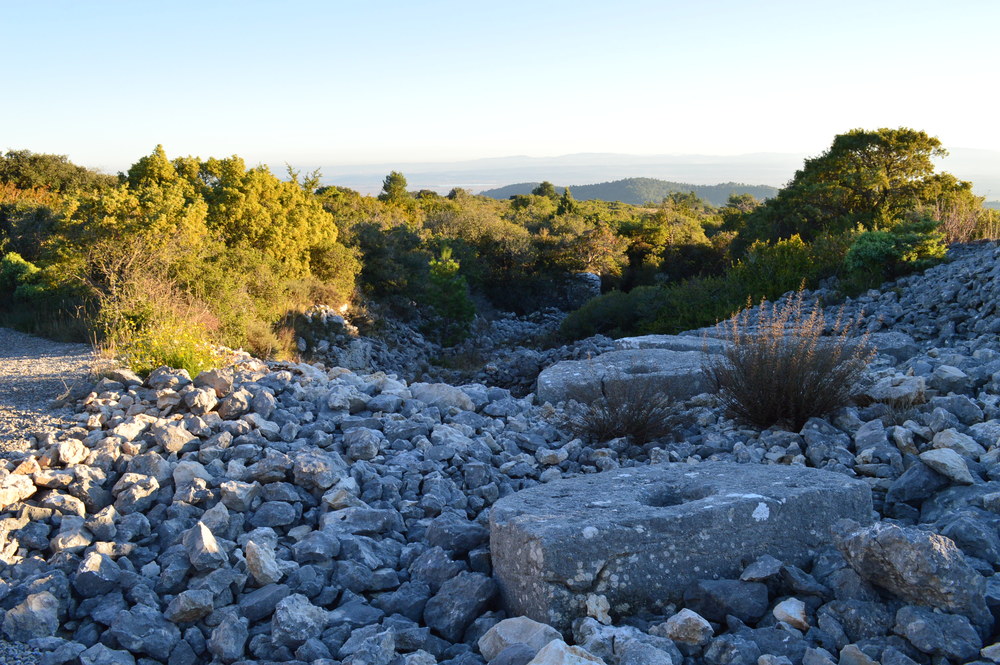
The Minervois, with its numerous mills, conceals an important heritage of millstones. A visit to Félines-Minervois will allow you to discover a unique 18th century mill tower with a mill wing area of 35m²!
On the Causse du Minervois, the St Julien stone, a limestone made of quartz, was prized by millers of yesteryear for the production of wheat flour needed to make bread. Feel free to visit the site of the quarry of St Julien des Meulières.
ON THE WAY TO THE HEIGHTS OF THE MINERVOIS AND THE SAINT-PONAIS
Going up from Félines-Minervois to Ferral-les-Montagnes, via Cassognoles, enjoy a total change of scenery! Let's climb on winding roads and see the vines disappear in favour of forests, moors, springs...
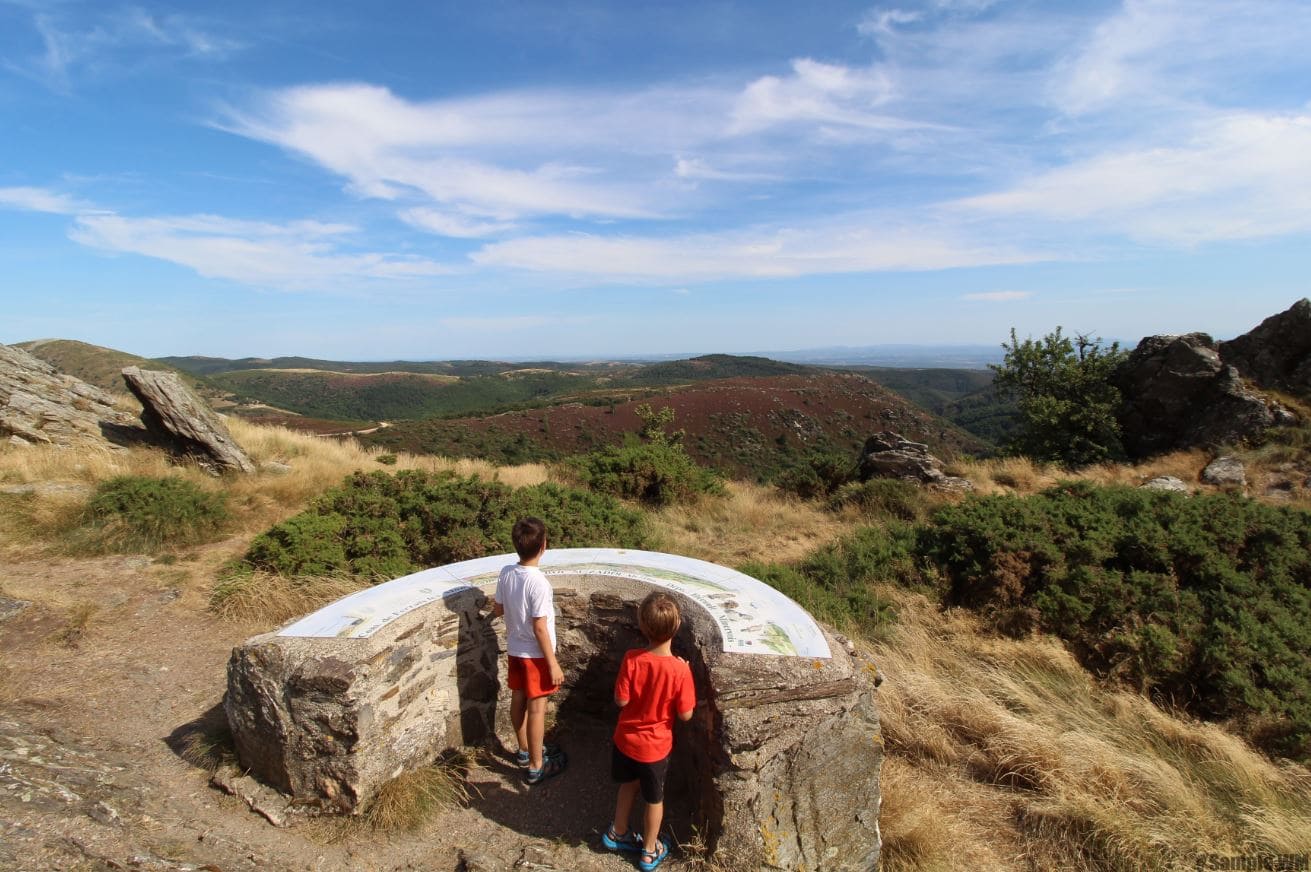 Orientation table of the Roc Suzadou in Ferrals les Montagnes
Orientation table of the Roc Suzadou in Ferrals les Montagnes
In Ferrals-les-Montagnes, take a break while discovering the orientation table at the Roc du Suzadou (720 metres above sea level) and enjoy the magnificent panorama: the forest on one side, the heather and hay fields on the other, in front of you the wine plain, the Corbières, the Pyrenees, the Mediterranean. A wonderfull 180-degree turn!
THE "UNDERGROUND" LANDSCAPES
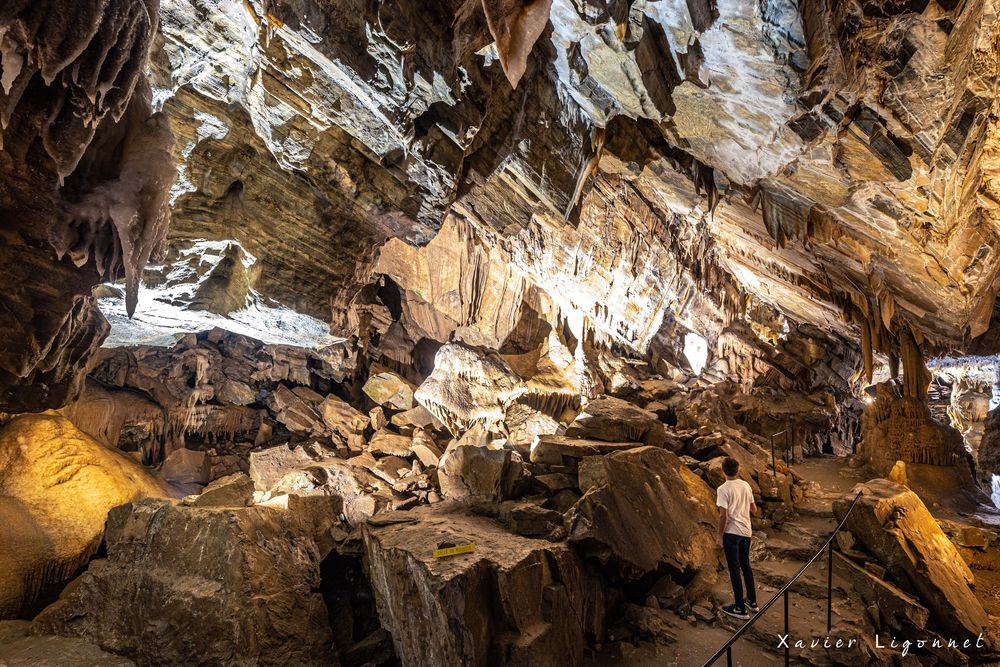
In Courniou, close to the Voie Verte (The Greenway), there is a cave nicknamed the "Grotte de la Devèze" or "Le Palais de la Fileuse de Verre" (the Palace of the Glass Spinner) thanks to the beauty and finesse of its varied forms. In there, through centuries, water has sculpted a profusion of shapes such as stalactites, stalagmites, aragonite flowers.
Le Palais de la Fileuse de Verre is the only visitable cave in the Haut-Languedoc Regional Nature Park! So don't miss it!
The subterranean world is full of treasures but to discover them, you will need to plan a guided tour or by watching a 3D film at the Cebenna centre in Olargues.
LE SOMAIL : LAKE AND FORESTS
Above the valley of the Jaur, flowing eastwards from St Pons de Thomières, the Somail Mountains stretch out about 800 metres above sea level, alternating forests and moors, around the The Lake of Vesoles and its « jump ».
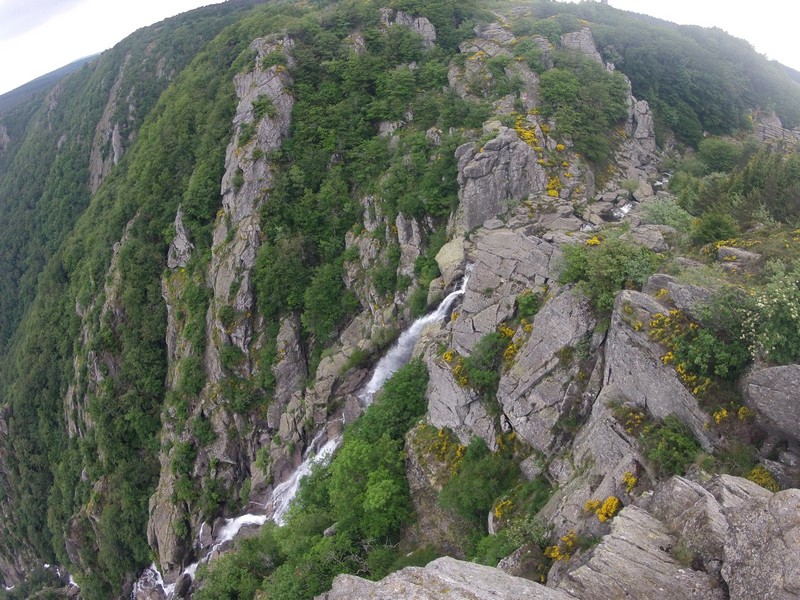
The Vesoles jump is where the river of the "Bureau" flows into the void to join the river of the Jaur, 600 metres below. A breathtaking panorama over the valley and the fore-mountains facing it.
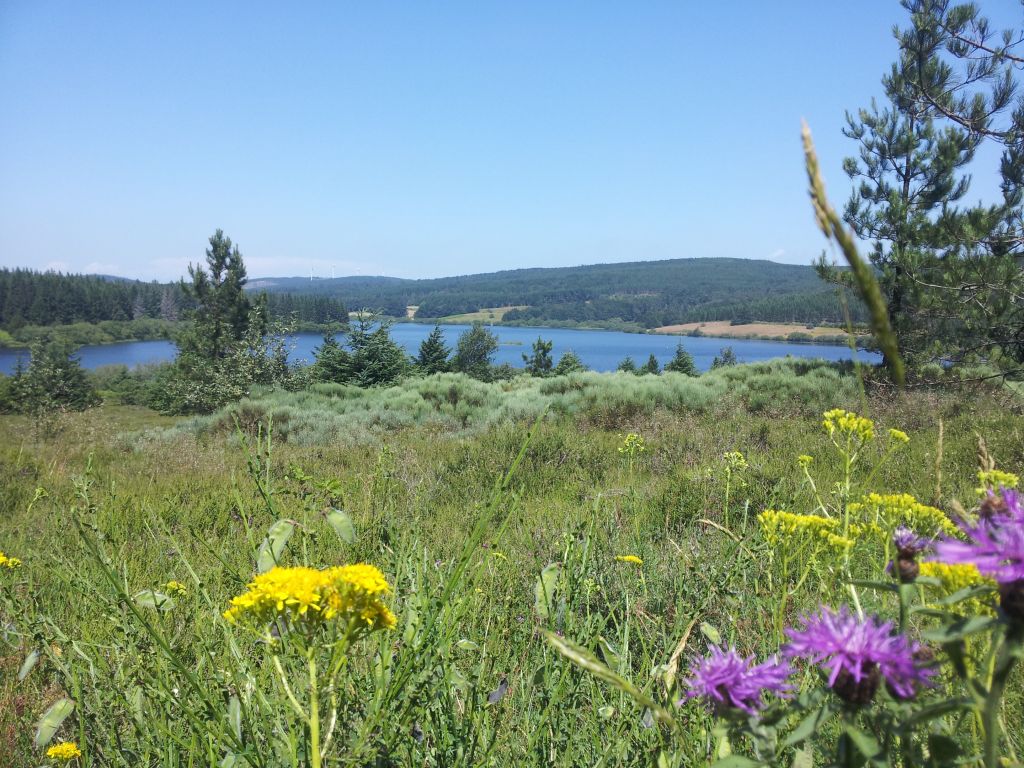
Moors and forests surround the wildly beautiful Vesoles Lake.
THE CAROUX MOUNTAINS
Don’t miss the great beauty of the natural sites of the Caroux Mountains.
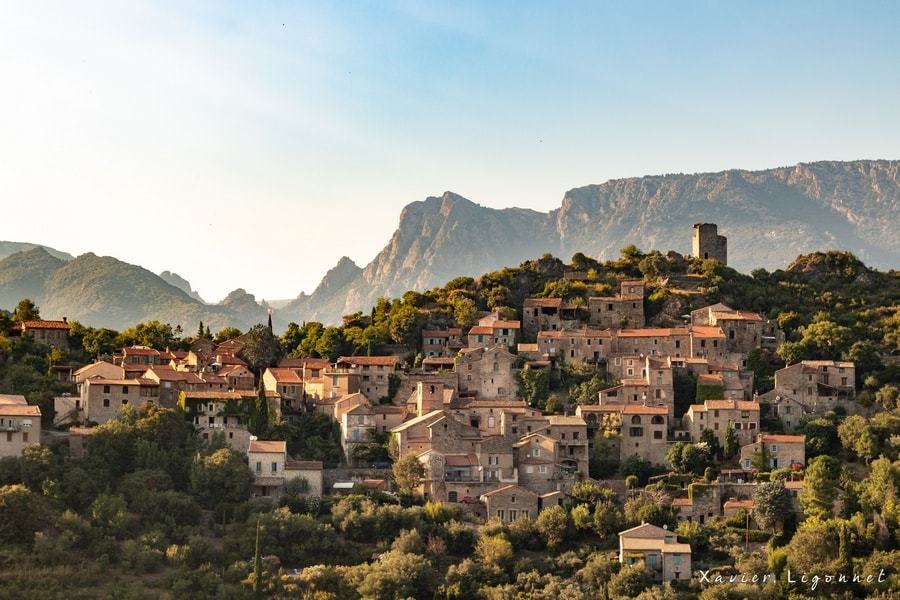
The « lying down woman » mountain, seen from Vieussan
THE GORGES OF HERIC
The Caroux, in the shape in a lying woman's body, named Cebenna, can be recognised from afar and serves as a landmark for Mediterranean sailors.

The Heric torrent runs down the slopes of the Caroux and gives birth to the Gorges d’Héric.
THE GORGES OF COLOMBIERES

The nearby Gorges de Colombières-sur-Orb are also worth a visit.
The Caroux Mountains are a true paradise for outdoor activities lovers!

Hiking lover? All level hiking trails cross the Caroux massif and the valleys.
Are you more of a two-wheeler? The Voie Verte Passa Païs (Greenway) offers you no less than 80 km (49,7097 miles) of cycling road between Bédarieux and Mazamet.
The French Cycling Federation labelled mountain bike base is at the heart of a network of about fifteen marked circuits.
Need a thrill? Try out an unusual 2-wheel activity: the downhill scooter!
Thrill seekers? Opt for canyoning: the Caroux conceals playful torrents. But other activities are also possible: canoeing, kayaking or even rafting in the Orb rapids.
Do you prefer having your feet on the ground? Climbing, speleology, the via ferrata, tree climbing and others will delight you and complete your hunger for adventure!
Some of these activities could be done with children too, or, if they are not so fond of thrill, maybe try an orienteering race or even some river fishing, if they don’t like thrill, maybe try an orienteering race, a treasure hunt or even river fishing.
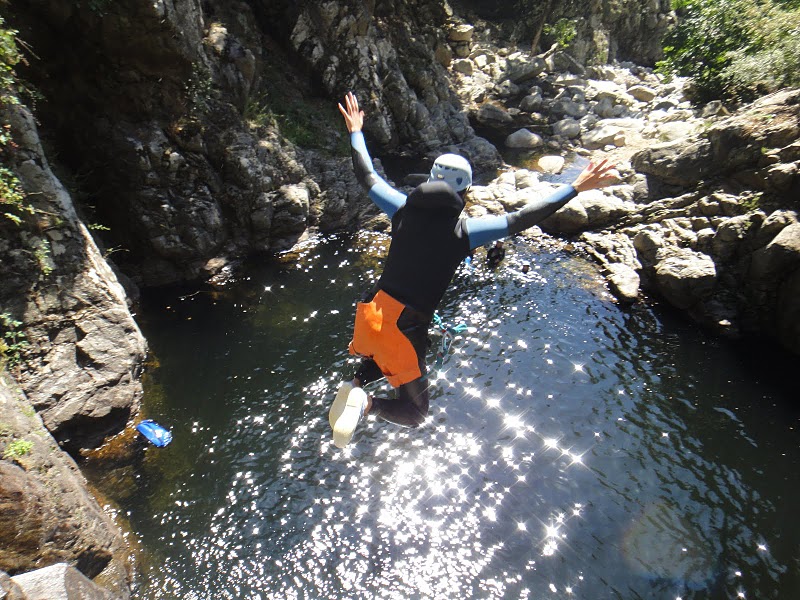
THE ORB AND JAUR VALLEY AND ITS TYPICAL VILLAGES
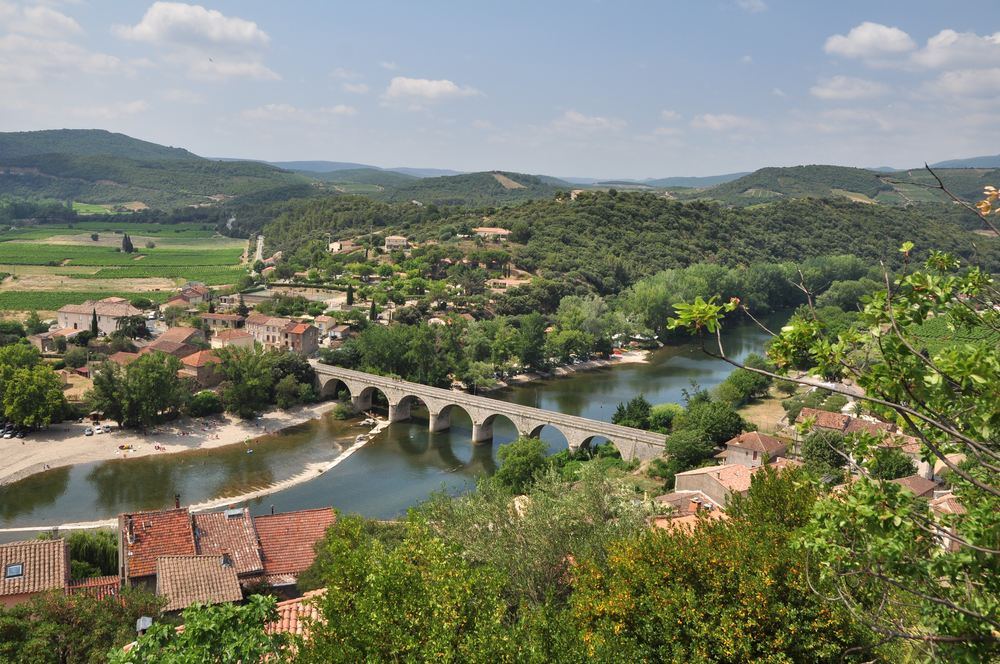
Along the Orb Valley, is it possible to visit a host of villages : Olargues, one of the most beautiful villages of France, Roquebrun, Vieussan, the small streets of Mons la Trivalle, Colombières sur Orb, Saint Martin de l’Arçon.
MOUNTAIN VINEYARDS
Along the Jaur and Orb valleys, discover the vineyards that are giving the wines of the PGI (Protected Geographical Indication) of the Haute Vallée de l'Orb (High Valley of the Orb).
Near Vieussan, enter the Saint Chinian wine appellation area around Roquebrun, Berlou, the schist terroir!
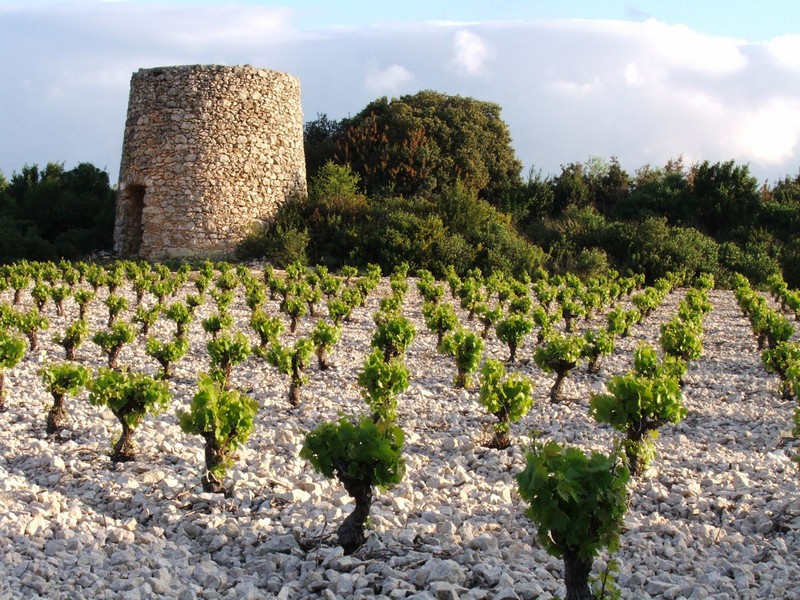
To complete the loop and return to the Minervois, one passes through the small wine-producing village of Saint Jean de Minervois, whose vines, sheltered by the Montagne Noire (Black Mountain) foothills, produce the excellent Muscat de St Jean.


